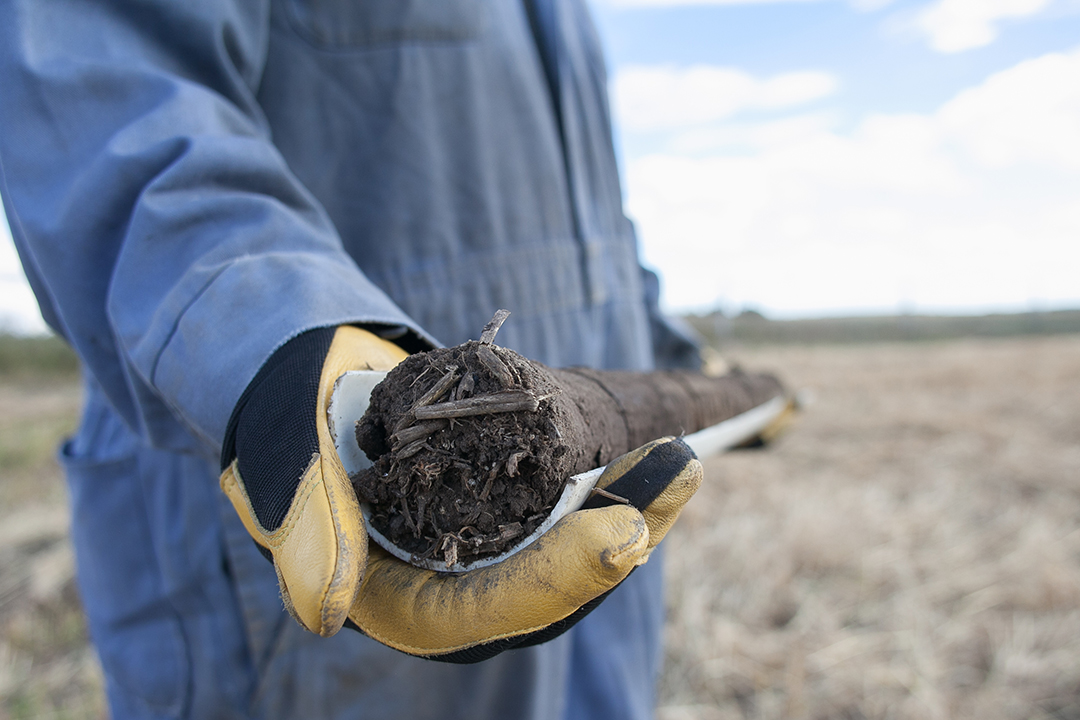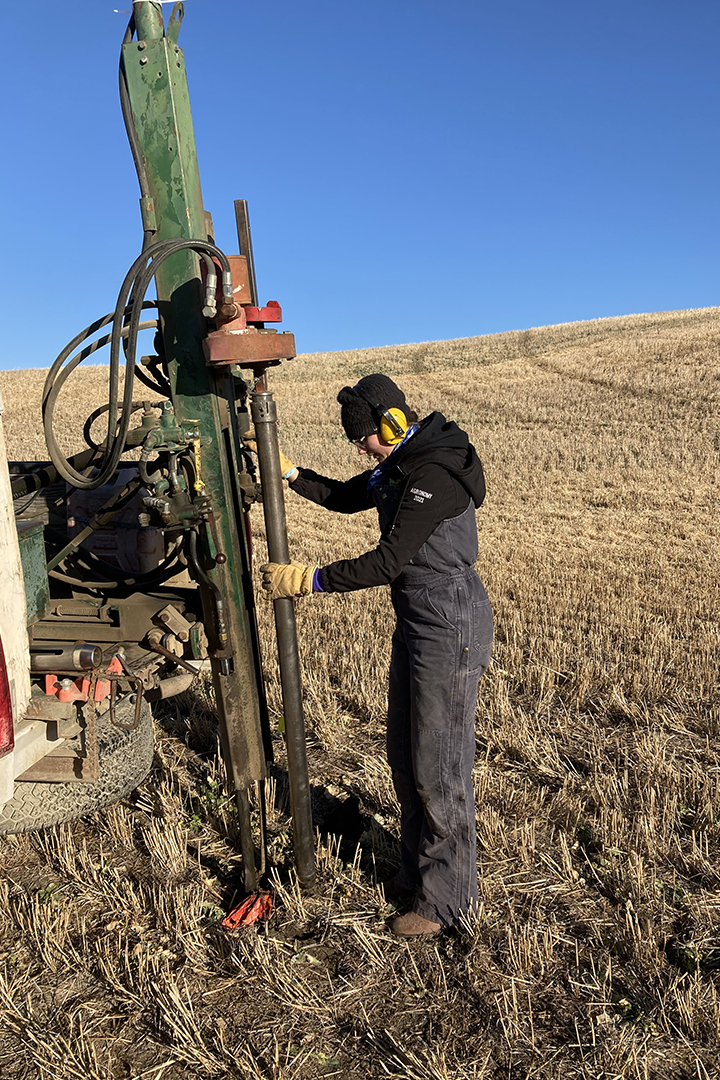
Soil organic matter plays vital role in global carbon cycling
Whether it’s the rich, dark-coloured soil in your backyard garden or the prairie soil in large fields where farmers grow their crops, the content of soil organic matter affects nearly every aspect of food production.
By Amanda Mitchell
Soil organic matter, which gives soil its dark colour and its light, “fluffy-like” structure, is important for allowing soils to support plant growth by holding water and releasing nutrients.
A less understood — but arguably the most important part of soil organic matter — is its role in global carbon cycling. Soil organic matter is made primarily of carbon that came from plants or other organic inputs such as manure, plus it contains nutrients such as nitrogen and phosphorous.
Soils also have the largest reservoir of carbon: they account for more carbon than the atmosphere and vegetation combined, which makes soil a key player in greenhouse gas mitigation.
National environmental policies such as the carbon tax in Canada highlight the importance of understanding how carbon cycles through soil and how land management practices can have an impact on this cycle to effectively decrease our country’s carbon emissions.
For over a century, researchers have been trying to understand how carbon inputs such as dead plants become soil organic matter that remains in the soil for a long time. The development of new research tools has allowed us to examine the flow of carbon from plants through the soil and back into the atmosphere, onto the surface of soil minerals or into a free-floating pool of organic matter in soil.
This knowledge has led to a new framework of understanding soil organic matter that has two main pools: particulate organic matter and mineral-associated organic matter.
Particulate organic matter is larger and less dense. This pool includes organic matter than can be identified visibly, such as plant roots or leaves, as well as small pieces of organic matter that are not attached to soil minerals.
Mineral-associated organic matter is smaller, denser and unrecognizable to the human eye. This pool includes organic matter that’s attached to soil minerals such as clay and silt particles. The carbon in this pool is mainly in the form of sugars and amino acids that are dissolvable in water, or as organic matter that’s broken down into its smallest components by micro-organisms. These micro-organisms eat the carbon and release it as a byproduct of their metabolism, or they build the carbon into their biomass which becomes attached to minerals when the microbe dies.
Researchers consider particulate organic matter to be the pool of carbon that stays in the soil for a short time and is most susceptible to changes in the climate. Despite its susceptibility, it may be the easiest place to increase carbon content of soil.
Unlike mineral-associated organic matter that will eventually saturate all the soil particles, the pool of particulate organic matter will never fill. It also holds less nitrogen than the pool of mineral-associated organic matter, which means that it’s easier to increase the amount of particulate organic matter without the use of nitrogen fertilizer.
Recent research on particulate organic matter found that the agronomic practices previously thought to increase soil organic matter still apply. As particulate organic matter is considered very sensitive to loss, it’s important to avoid tilling the soil.
Most Saskatchewan farmers have adopted zero tillage practices as pesticides allow them to kill weeds without the use of tillage — but fewer options are available to gardeners whose crops are often very sensitive to soil compaction. To improve the soil health of a garden, it’s important to avoid rototilling and to find alternatives that loosen the soil where plants will be seeded.
Adding the plant residue from the previous season directly into the soil also helps to reduce soil compaction as organic matter improves soil structure.
Diverse crop rotations — including legume crops that convert atmospheric nitrogen into organic nitrogen — may be more important to adding long-term carbon to the soil than researchers originally thought. More carbon from this nitrogen-rich organic matter is believed to enter the stable, mineral-associated organic matter pool.
As for gardening, gardeners can improve their crop rotation by keeping track of where they plant each type of vegetable every year and rotating their places from year to year.
Farmers and gardeners alike are stewards of the land on which they produce food. By understanding how to increase long-term soil organic matter content, both groups of producers can manage their soils in a sustainable way that will improve their yields and benefit the environment by reducing carbon in the atmosphere.
Amanda Mitchell of Bracken, Sask., is a Master of Science student studying soil science in the College of Agriculture and Bioresources at the University of Saskatchewan.
